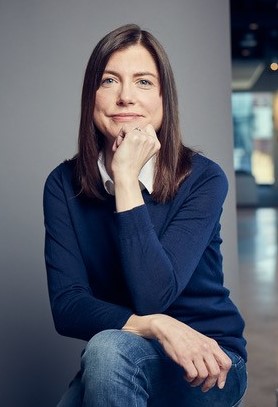In the latest "In Practice" column, Laura Stevens of Cengage Group discusses how she helps her company maintain a strong learning culture that emphasizes career development
A spate of surveys, reports and articles, including the recently published Stellar Performance Report 2022 from Thomson Reuters, find that engaging and retaining high-performing talent requires a work culture that values their contributions and offers them the potential for career advancement.
In this installment of In Practice, Rose Ors, the CEO of ClientSmart, speaks to Laura Stevens, Executive Vice President and General Counsel for education technology company Cengage Group, about why she places so much importance on the professional development of her team and how she goes about doing it.
Rose Ors: Why do you place a premium on learning and professional development?
Laura Stevens: We all want to work for an organization that values and supports personal and professional growth. One of the reasons I joined Cengage was that its core purpose — to facilitate learning for everyone — so perfectly aligns with my profound interest in developing myself and others. In my experience, talent development is among the most valuable investment an organization can make to attract and retain a highly diverse team of people. We all know the numbers; companies are losing talent at an unprecedented pace. One of the top reasons for the Great Resignation is that employees are not advancing because they aren’t being given opportunities to grow.
Rose Ors: How do you help your team grow and develop?
Laura Stevens: I am intentional about fostering a learning culture within the department that supports our ability to serve the business better. For two years we held monthly lunch and learn sessions with senior leaders from the strategy group, marketing, HR, public affairs, finance, IT, communications, and other key functions. The sessions gave my team greater visibility into what was going on in the various business units. The team also learned some nuts and bolts; for example, the finance group walked them through the legal department’s budget process and how to read a balance sheet.
Rose Ors: I imagine the sessions also fostered human connections among your team and the leaders.
Laura Stevens: Absolutely. When our Chief Information Officer joined us at one of these sessions, he not only talked shop, he spoke candidly about his career — the ups and the downs — and his interests and hobbies. My team was spellbound and asked him a ton of questions. It was fantastic to witness how his openness and vulnerability impacted all of us in only an hour. It fostered a palpable connection.
Rose Ors: How else do you develop your team?
Laura Stevens: Stretch assignments are critical because the projects that people work on or lead are what truly make a difference in their career trajectories. As the name connotes, a stretch project entails learning something new. So, it falls on me to be clear that the assignment is a career-enhancing opportunity. The person across the desk or screen from me needs to walk away feeling excited, not burdened by the challenge.

I also believe in the power of having a business coach. I have one, so I speak from experience. If I think a team member is an excellent candidate for coaching, how I talk to them about it is all-important.
I could begin by pointing out problems and how a coach can help fix them — not a productive approach. What I do say — and what I also mean — is: ‘You have great potential and I want to have you work with a coach. We want to invest in you.’ It is a conversation that lets the person know they are valued.
Rose Ors: What role does feedback play?
Laura Stevens: In my experience, feedback is a highly effective form of coaching when done on an ongoing basis.
Establishing a regular stream of clear and constructive feedback builds trust and ensures everyone is on the same page about what success looks like and what is required to get there. Something one of my team members recently said that has resonated with me in my own management style is “Clarity is kindness.”
Rose Ors: What role does creating an environment of psychological safety play in fostering learning?
Laura Stevens: We talk a lot about the importance of showing up for each other in ways that build a workplace where collaboration, trust, and transparency are lived and felt. These workplace traits provide the psychological safety that we need to learn. Why? Because a big part of learning and growing is asking questions, asking for help, sharing ideas, and sometimes failing.
Rose Ors: What are the benefits of your approach to talent development?
Laura Stevens: We have a high retention rate. We also have people who leave and come back. I am also very proud that for the last several years, Cengage’s annual employee engagement survey has the legal department either first or tied for first place as the most engaged group.
Rose Ors: Now my final question. How do you model a growth mindset?
Laura Stevens: The role of any leader is to model the behavior they want to see. As a naturally curious person, I am always looking to learn new things. I make it a practice to talk with my teams about what I am learning from the podcasts I listen to and the books and articles I read.
They know I work with an executive coach, and I share with them what I am working on with her and what I am learning along the journey. I also encourage them to follow my lead and join and actively participate in external professional networks. These networks are a wonderful place to meet new people, exchange ideas, get advice, and learn about volunteer opportunities.
When I walk into a room or join a meeting and hear my team excitedly talking about an article or book they’ve read or a podcast they’ve stumbled upon, I feel proud and energized that I have helped create a place where such conversation flows.







